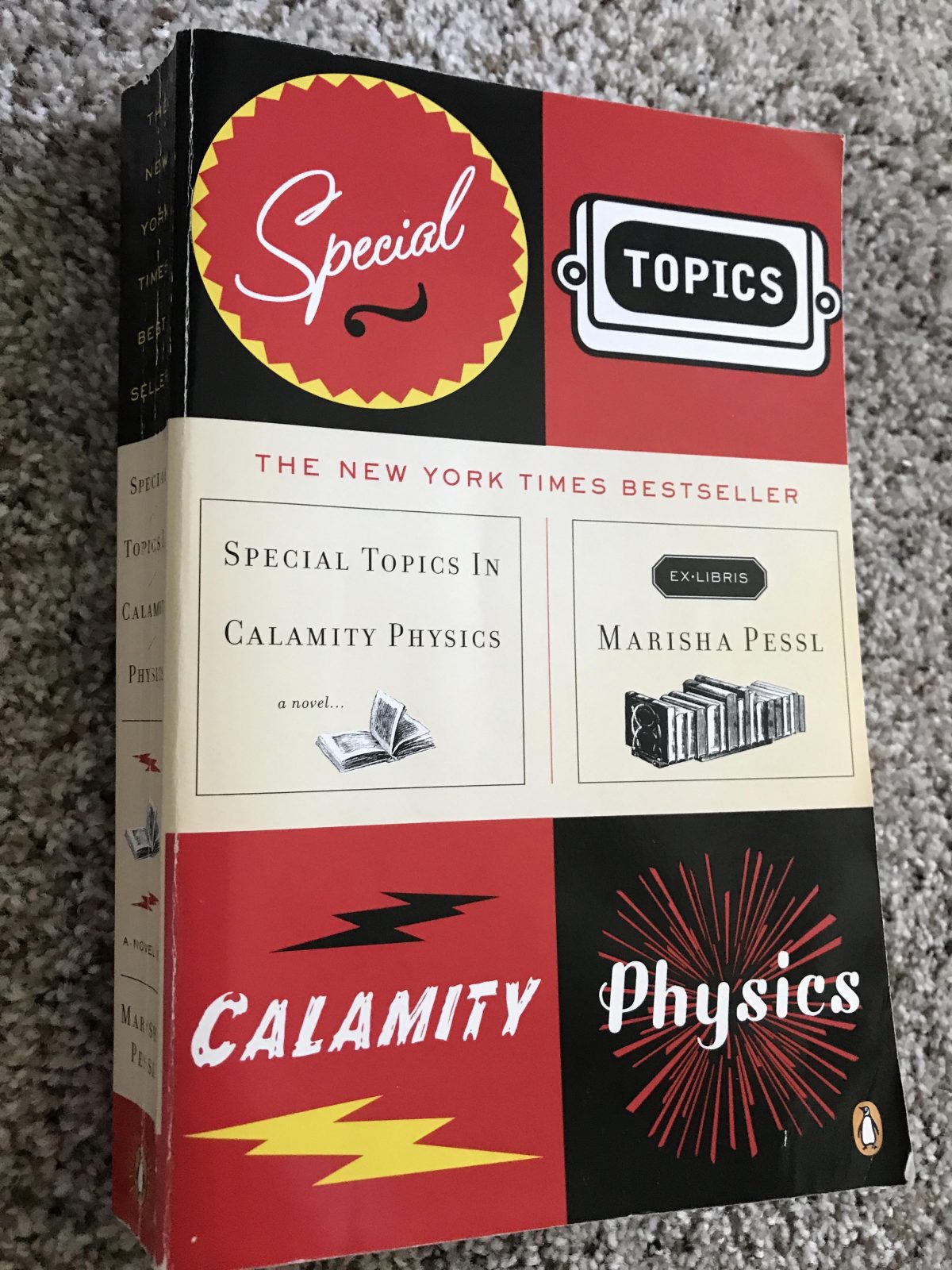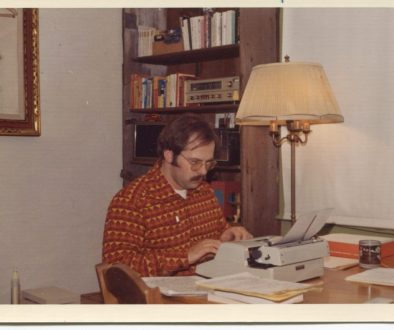“Special Topics in Calamity Physics” – an Enthralling Novel by Marisha Pessl
For reasons which remain stubbornly unclear, this novel rested on my bookshelf for about 14 years. How could I not have known what a rare and delightful read awaited me?
Blue, the heroine-narrator of this tale (I love that her name is Blue; in all its connotations, it’s perfect), whose sense of the ironic, the absurd, is evident from the first moments: “Before I tell you about Hannah Schneider’s death, I’ll tell you about my mother’s.” Thusly does Pessl bookend her story with a deep-set what-happens-next hook, assuring the reader will have no idea how the story will unfold or end. The mere fact that the author can weave so many story elements into whole fictional cloth is nothing short of stupendous, made even more impressive because it’s a first novel. And it’s quite a prodigious book, weighing in at 514 pages – about 190,000 words. (Authors, they just don’t publish Big Story books like they used to.)

Gareth van Meer, Blue’s father, an itinerant professor of physics, by hopping from one college to another, in essence orphans his daughter. She idolizes him intellectually, and forms no real bonds of friendship until high school. The relationship between Blue, Jade, Charles, Milton, Leulah (and their favorite teacher Hannah), are tenuous although of critical importance to the story.
Pessl reveals Blue, and the plot, in 36 chapters titled after (and therefore suggestive of) famous novels: Wuthering Heights, A Room With a View, Things Fall Apart, proffering a counterpoint to Pessl’s own novel and, for me, often giving pause to consider the metaphor. (This is a DIY thing.)
So we have a convoluted plot, an iconoclastic structure, and absolutely brilliant writing. As a writer myself, I often asked myself how much time and thought the author put into creating her scintillating sentences and paragraphs, for indeed, they are clever, intelligent, often humorous and always, always artful:
“On the very best of days I was their burden, their bête noire, and so, if you considered Newton’s Third Law of Motion, ‘All actions have an equal and opposite reaction,’ and the five of them spontaneously turned into lil’ Baby Face Nelsons and Dimples, they also had to turn into old Lost Weekends and Draculas, which best describes the looks on their faces in that instance.” [p100]
or
“Much of what Jade swore by, when she was drunk or sober, could be trapdoors, quicksand, trompe l’oeil, the hoax of light as it speeds through the air at a variety of temperatures.” [p219]
or
“Or else, their romance had gone flat as uncapped Pellegrino: ‘The shelf life of any great love is fifteen years,’ wrote Wendy Aldridge, Ph.D., in The Truth About Ever After (1999).” [p449]
And in this last quotation we discover another clever trope of Pessl’s, the fictitious reference to a book. There are dozens, if not hundreds, to pique the reader’s interpretation. This one, like most, are made up, but in a few cases they are not. That in itself is awfully clever, and they provide a clever, powerful counterpoint to her own novel, giving one pause to consider the relationship between the two.
As the pages turn and the stakes mount, we read on with contorted perceptions and freighted emotions as Blue’s world dissolves into calamity physics, as the title suggests. I increasingly wondered how Pessl would end her novel. Just you wait and see. No peeking!




